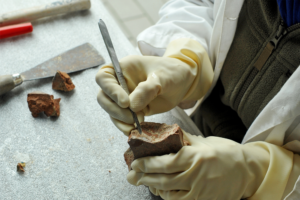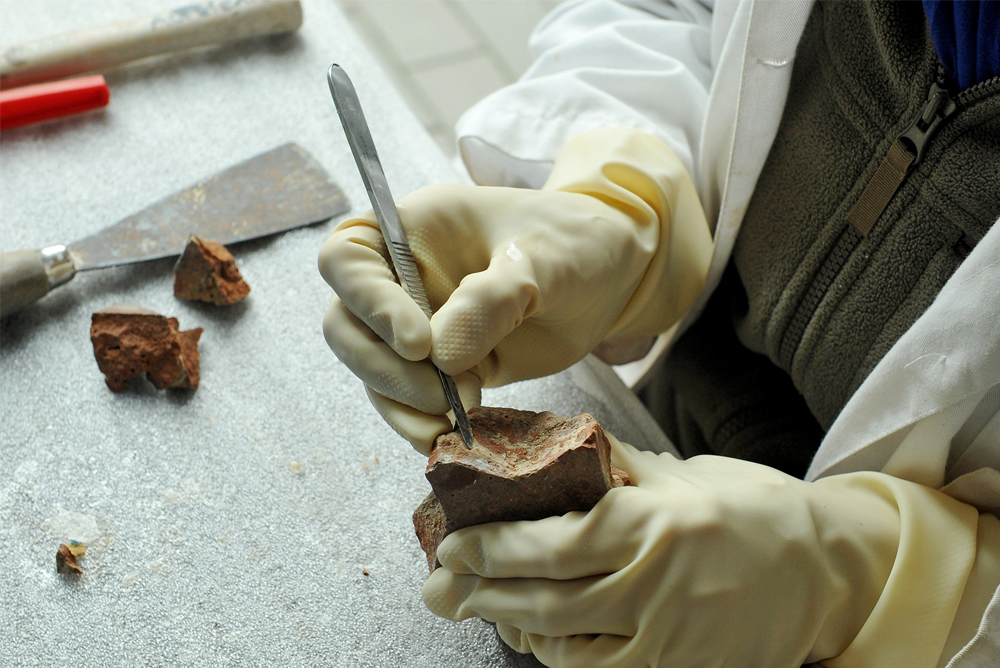Disclaimer: The information on our website is provided for general information purposes only. We make no representations or warranties of any kind, express or implied, about the completeness, accuracy, reliability, suitability or availability with respect to the website or the information contained on our website for any purpose. Any reliance on such information is therefore strictly at your own risk and we are not liable for any damages or losses arising out of or resulting from your reliance on any information contained on our website.
A conservationist preserves and handles historical artifacts to ensure their condition is not altered and is maintained to its original state as much as possible. They usually work behind the scenes and collaborate closely with a curator and a variety of historical organizations. A conservationist restores and appraises objects that may be acquired by their employer. They are responsible for the assembly, storage, and research data of a collection of exhibits. Historical conservationists also record, identify, and/or install pieces for showcasing in museums or at historical sites.
How to Become a Historical Conservationist

Conservationists typically hold a master’s degree or higher in conservation. Though advanced degrees are preferred, some employers may accept experience as a substitution.
Many colleges offer masters degree programs in historic preservation. Most often, these degrees are found in the history departments at the university. However, make sure you look at them closely to determine what they emphasize in their programs. Programs can vary greatly from focusing on historians’ role, legal or law aspects, and hands-on preservation part of the job. However, do not fret; all programs will teach you the necessary skills of preservation. Earning a master’s degree in conservation can take anywhere from 2-4 years, and according to O*NET OnLine, over 40% of conservationists hold a master’s degree while over 20% only have a bachelor’s degree. Some even seek specialization in one area, such as paintings, sculptures, written transcriptions, or other historical artifacts.
In addition to your degree, you will want to seek on-the-job training opportunities before you graduate. You can do this through an internship, summer programs, or even volunteer programs. Check out your local museums or historical sites to see what is available. You may also want to look at organizations such as the International Institute for Conservation of Historic and Artistic Works, American Association for State and Local History, or the American Institute for Conservation of Historic and Artistic Works for potential opportunities.
Job Description of a Historical Conservationist
A historical conservationist examines and collects data on artifacts or historical locations. They then determine or establish what preservation or storage requirements may be necessary. Historical conservationists may have to handle and clean historical objects such as fossils, old paper, pottery, wood artifacts, steel, or other items. Therefore, they should possess skills and knowledge in chemistry, fine arts, history, and archeology. They should also have some mechanical knowledge of tools or machines for repairs, maintenance, and the examination of artifacts.
At times they may contribute to the preservation of historical sites or buildings as well. Therefore, conservationists must have good communication skills and collaborate with state or federal governments to be knowledgeable in legal processes, policies, and procedures to preserve artifacts to ensure compliance. Historical conservationists are also responsible for providing informational tools to interpret historic structures for the general public. These can consist of designing an exhibit, creating a written publication, or even making a documentary film. Conservationists usually work behind the scenes under a curator or museum manager.
Historical conservationists work inside and outdoors, pending on what they are working on. They often are employed through the state or federal government, at museums, or nonprofit organizations. Art museums or government agencies directly employ historical conservationists; however, some freelance and only provide services to museums, historical locations, or galleries.
Article Citations
Bureau of Labor Statistics, U.S. Department of Labor, Occupational Outlook Handbook, Archivists, Curators, and Museum Workers.
National Center for O*NET Development. 25-4013.00. O*NET OnLine.

